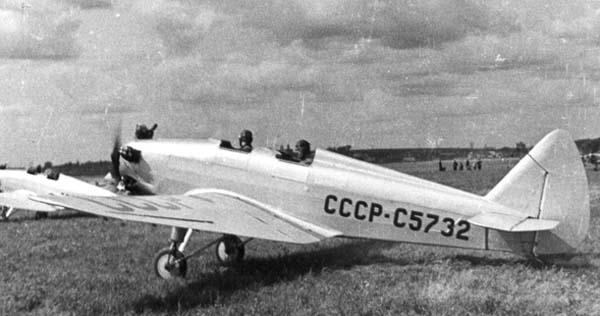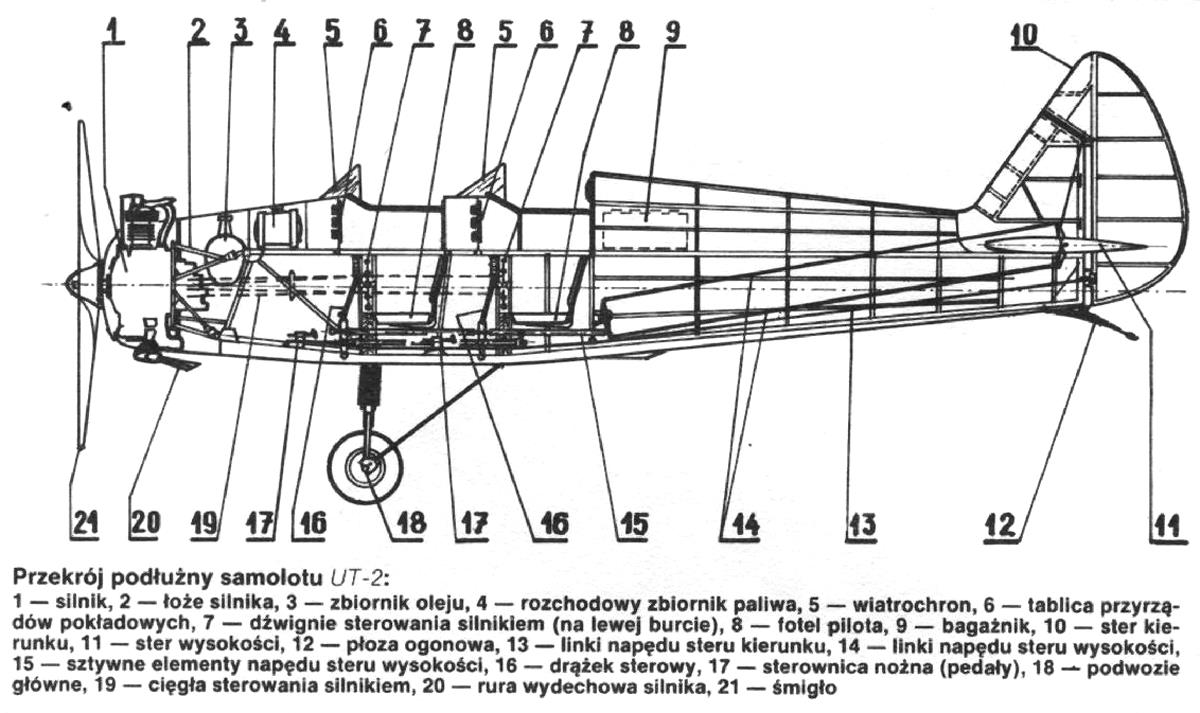| Type |
Werk.Nr |
Registration |
History |
|
|
|
|
| Type |
Two-seat trainer |
| Engine |
1 Shvetsov M-11E |
| Dimensions |
Length 7,15 m , height 2,99 m , span 10,2 m, wing area 17,1 m2 , |
| Weights |
Empty 628 kg, loaded 856 kg , max. take off weight 940 kg |
| Performance |
Max.. speed 210 km/h, cruising speed 205 km/h , range 1130 km, endurance , service ceiling 5000 m , climb |

During the Second Five-Year Plan, the Air Force and Aeroflot began to receive high-speed aircraft. Piloting them required appropriate skills. Therefore, flight schools and combat units needed faster training and training aircraft. Soviet designers created several types of such machines, including UT-2 and UT-1. These aircraft were developed by A.S. Yakovlev’s team almost simultaneously. In May 1935, tests began on the two-seat UT-2 with the M-11 engine of 100 hp. s., and in the summer - a single-seat UT-1, with an M-11E of 150 hp. With.
UT-2 (Ya-20) - training two-seat low-wing aircraft, a development of the AIR-9 and AIR-10, but the fuselage and center section are wooden. The aircraft's skin is plywood with canvas. The wing area of the UT-2 is 17.12 square meters, empty weight -616 kg, take-off weight - 938 kg.
The aircraft was produced in two versions: with an M-11E engine of 150 hp. With. and with a Renault Bengali 4 engine of 140 hp. With. The weight of both aircraft of both aircraft was minimal, quite close, the fuel reserve was 2 hours. The flight data turned out to be high. However, during state tests, a requirement was put forward to increase the fuel reserve to 7 hours and redesign the seat to allow the use of parachutes, which were not originally available. Flight weight increased by 112 kg, flight performance decreased slightly, but still remained quite high. In the conclusion of the Air Force Research Institute it was said that with the M-11E engine the aircraft is very good and can be recommended for initial pilot training. The option with Renault was no longer available, since we did not build this engine.
In 1937, the UT-2 aircraft was put on floats (as for the AIR-6) and three international records were set on it. Soon the UT-2 aircraft was accepted for serial production, but with a standard M-11M engine for initial training purposes. Introduction into the series began in September 1937 at two factories. Thanks to the simple and cheap design, there were no difficulties during implementation. Subsequently, the aircraft was produced at five factories.
The UT-2 became one of the main training aircraft in military schools and flying clubs. Its speed is 205 km/h, its ceiling is 3500 m. The UT-1, which is much more strict in piloting, was used mainly for training pilots - unit commanders and instructors. Its speed is 257 km/h, its ceiling is 7120 m. In the pre-war years, sports pilots set several international records (including women's) on the UT-1 and UT-2 for altitude, speed and flight range for an aircraft of this weight category. The UT-2 was built serially from 1937 to 1944 and until 1948 was the main training aircraft in Air Force flight schools.
In order to improve the spin characteristics, in 1941 the aircraft UT-2M was created, which was distinguished increased sweep and transverse V wing, modified tail tail, reducing the area of the ailerons, etc. The UT-2M was very simple to management, <forgave> gross student mistakes, not included in the flat corkscrew, and entered a steep corkscrew very reluctantly and even came out of it with neutral steering wheels without the slightest lag. The plane received widely recognized and highly appreciated. Use of UT-2 constantly expanded, and by the beginning of the war it completely replaced the U-2 as training aircraft.




